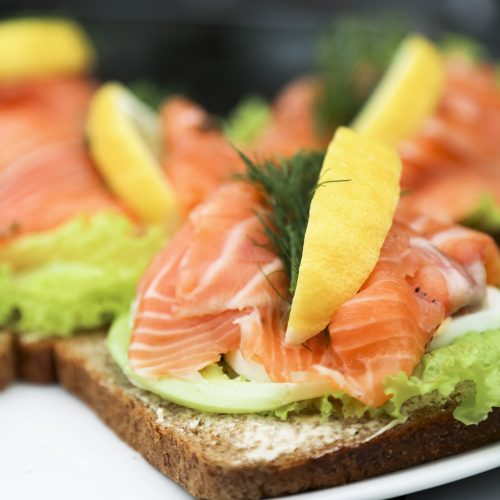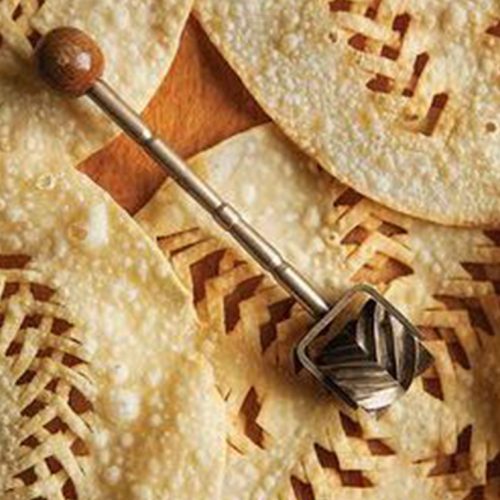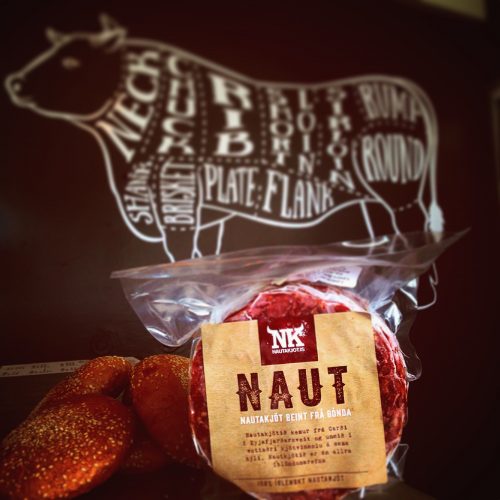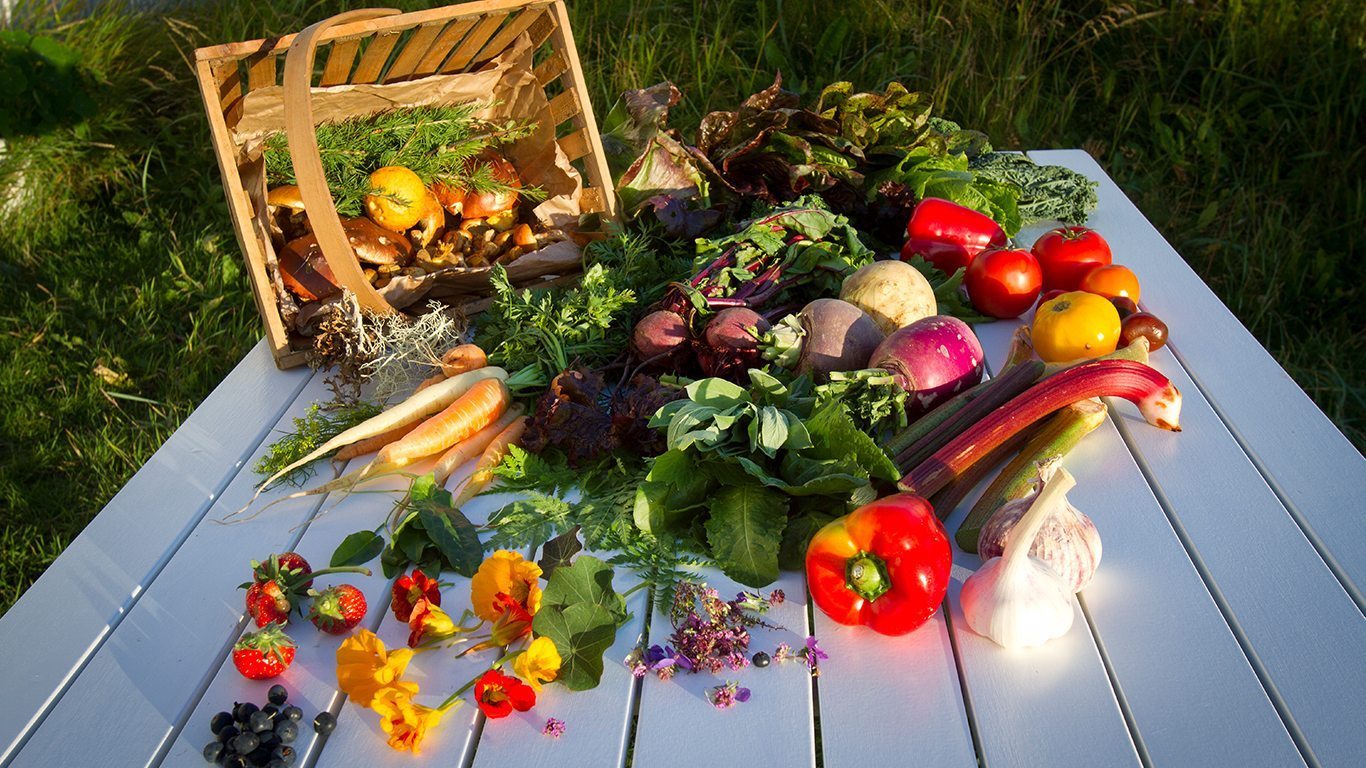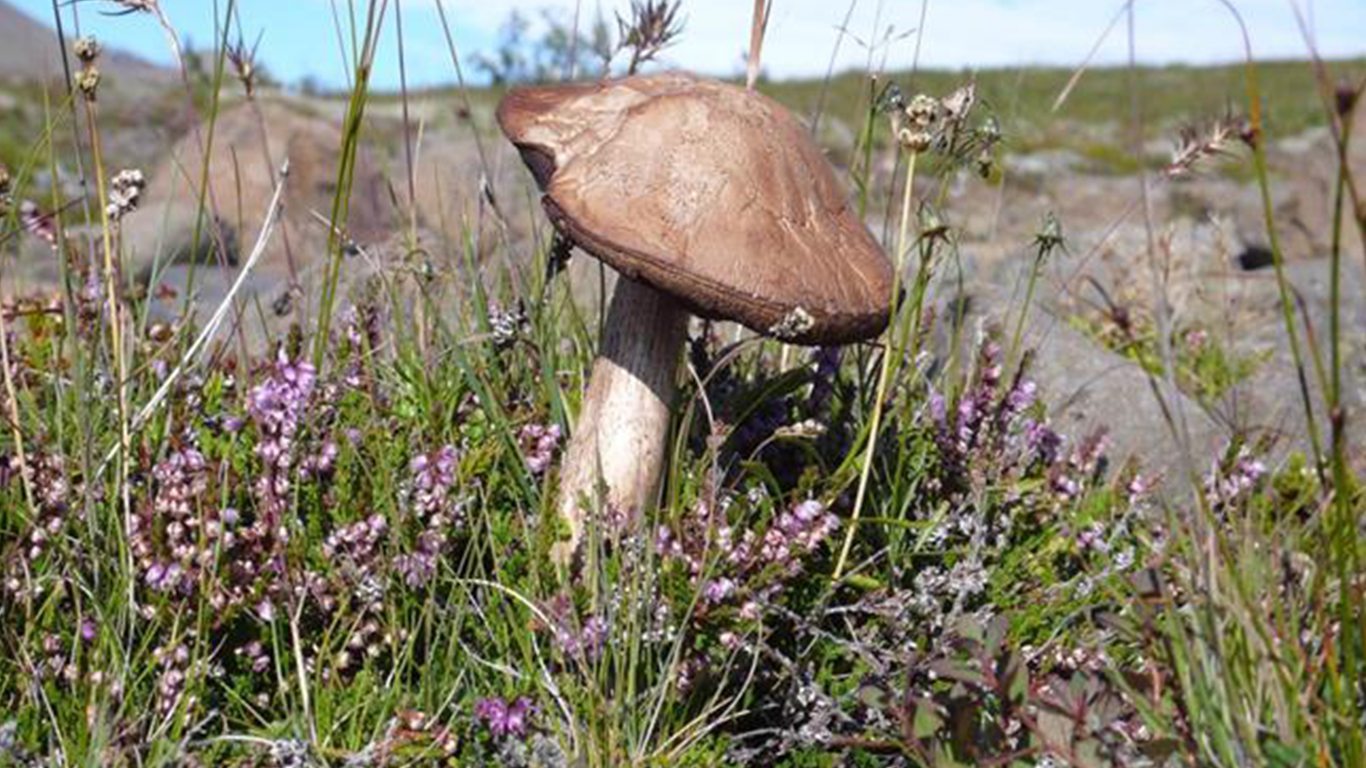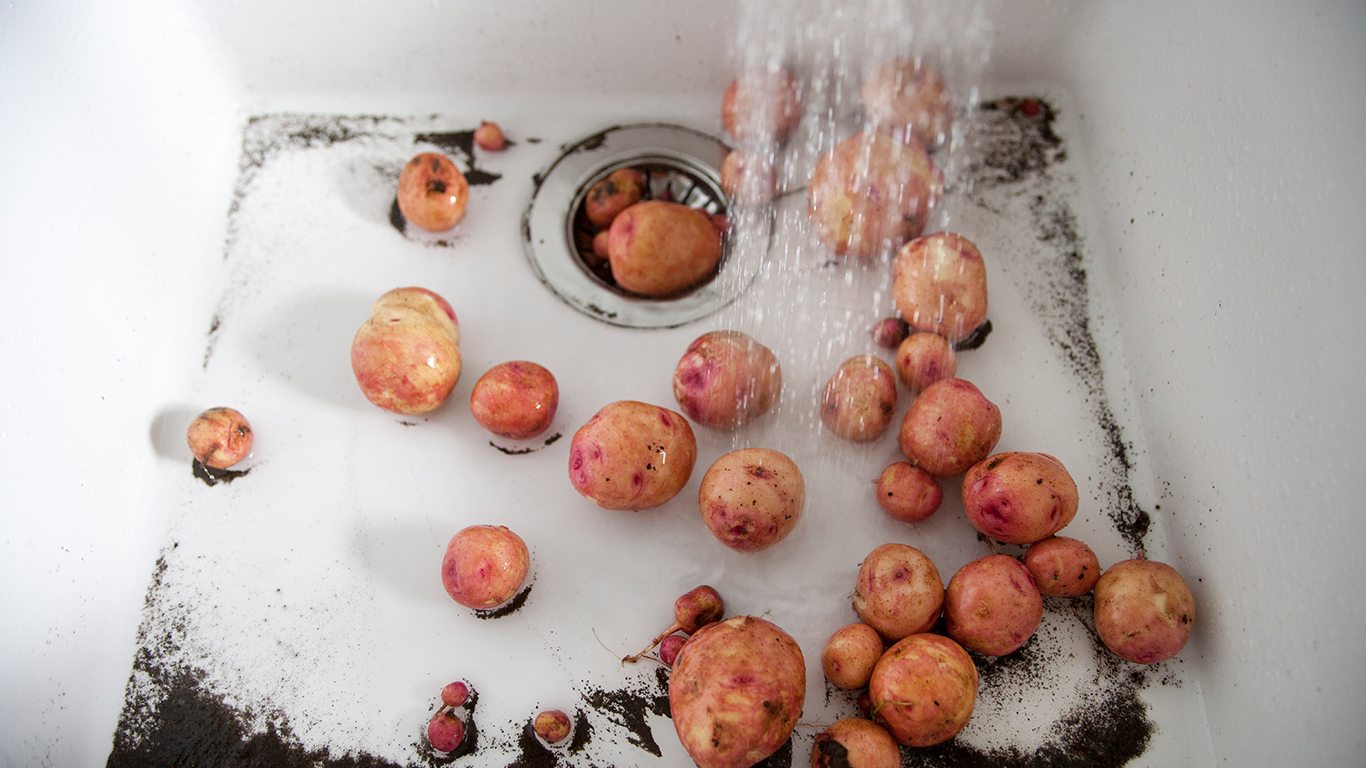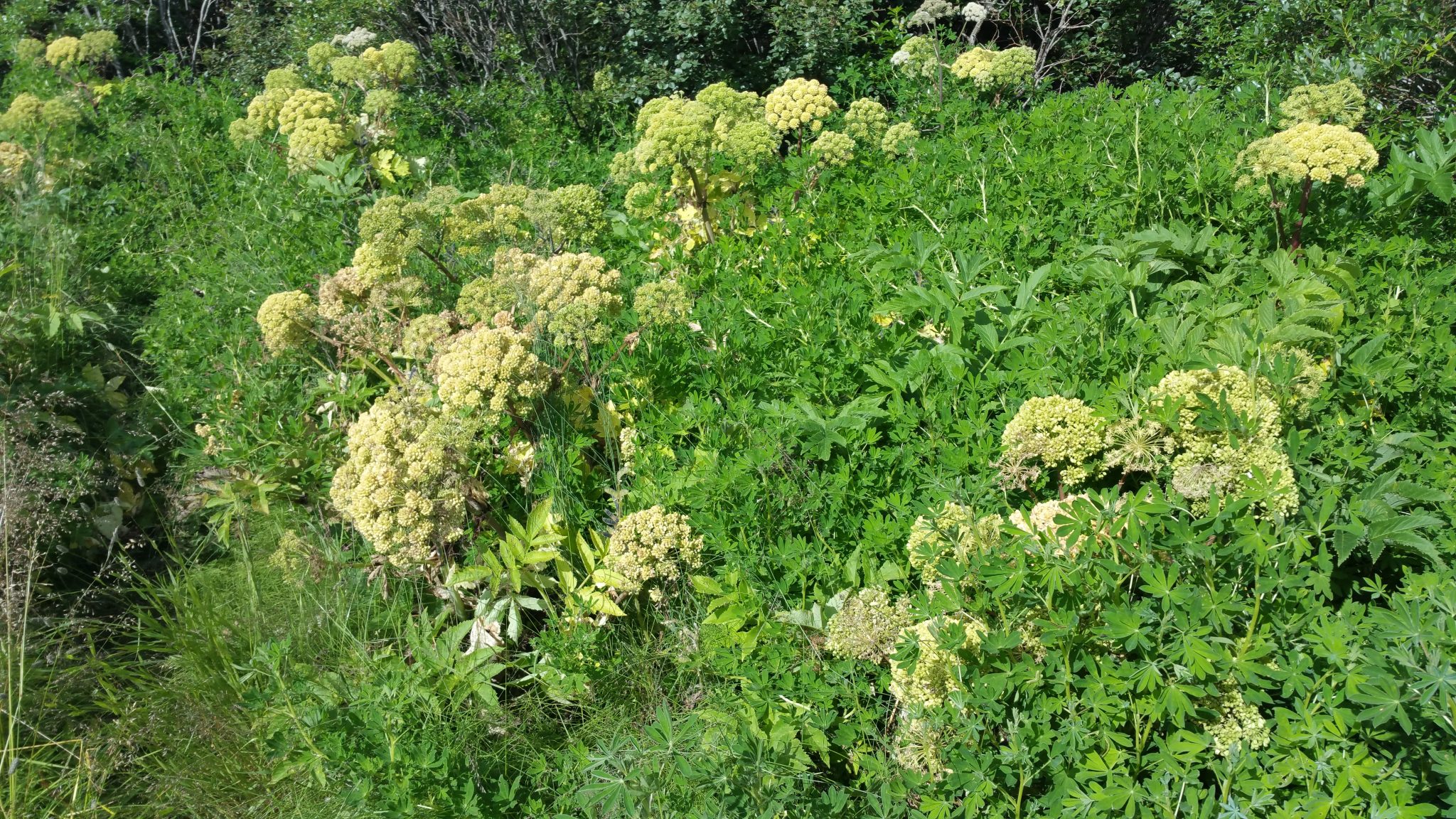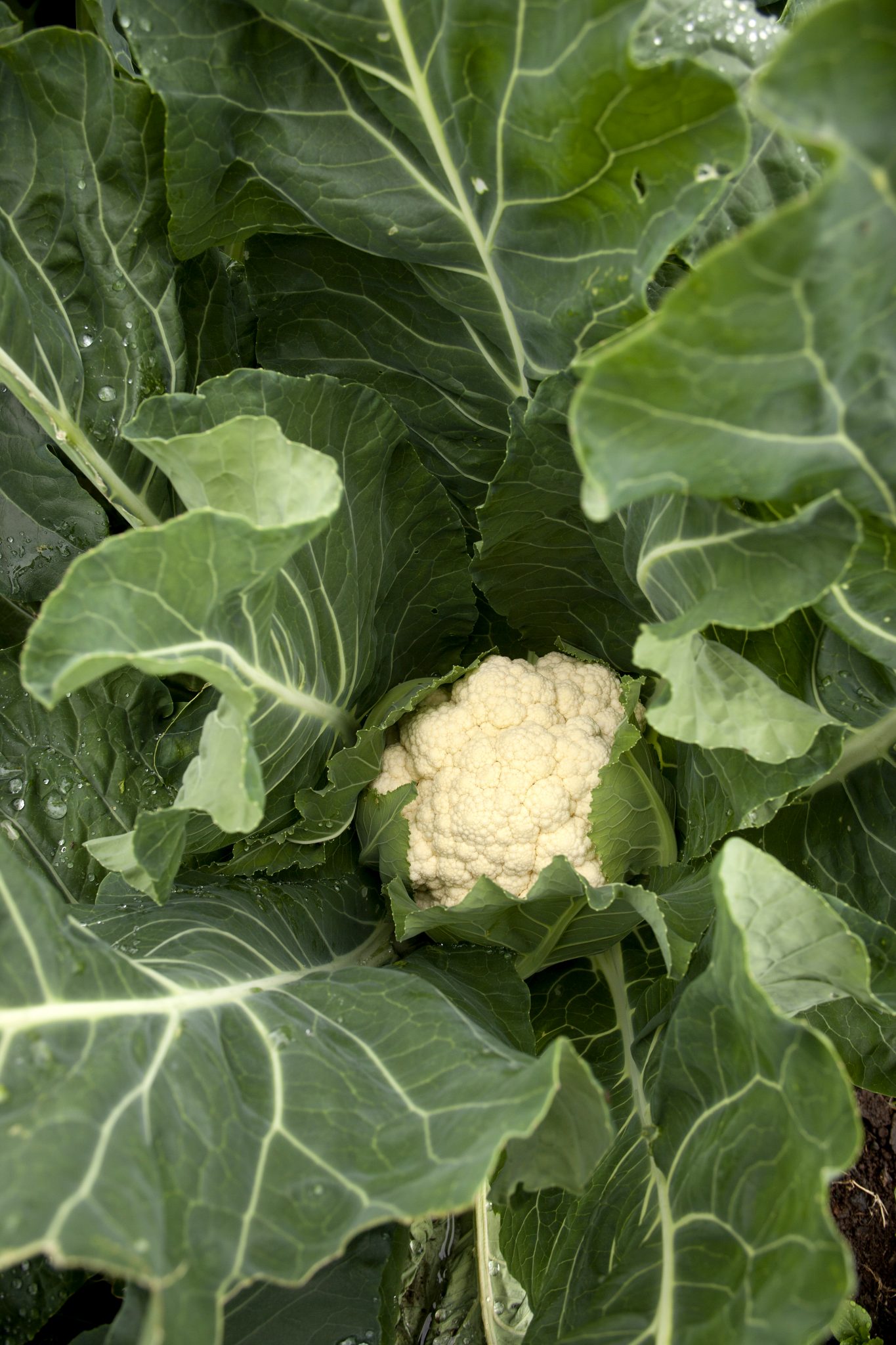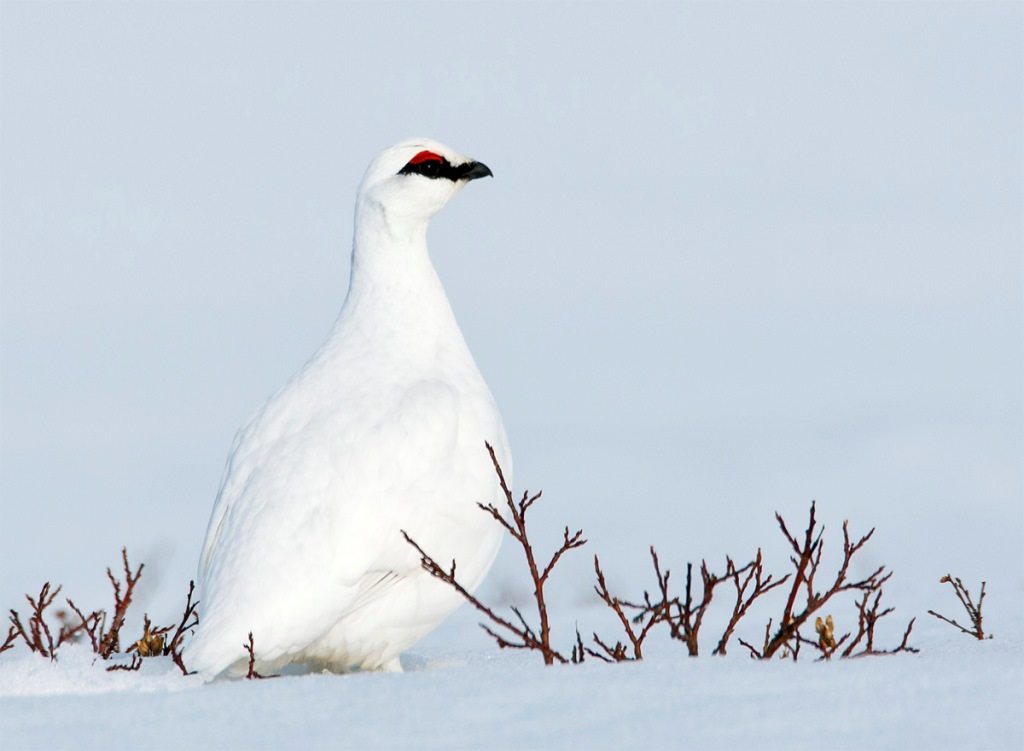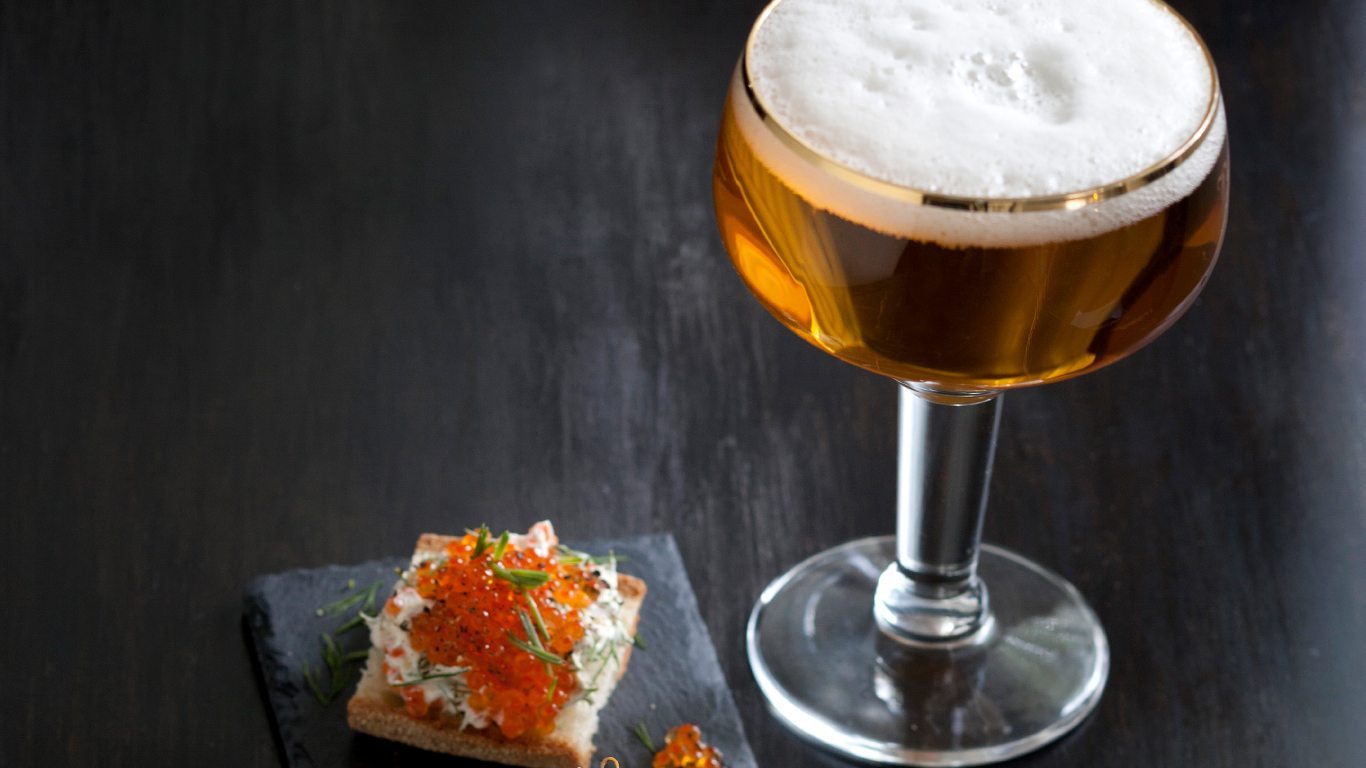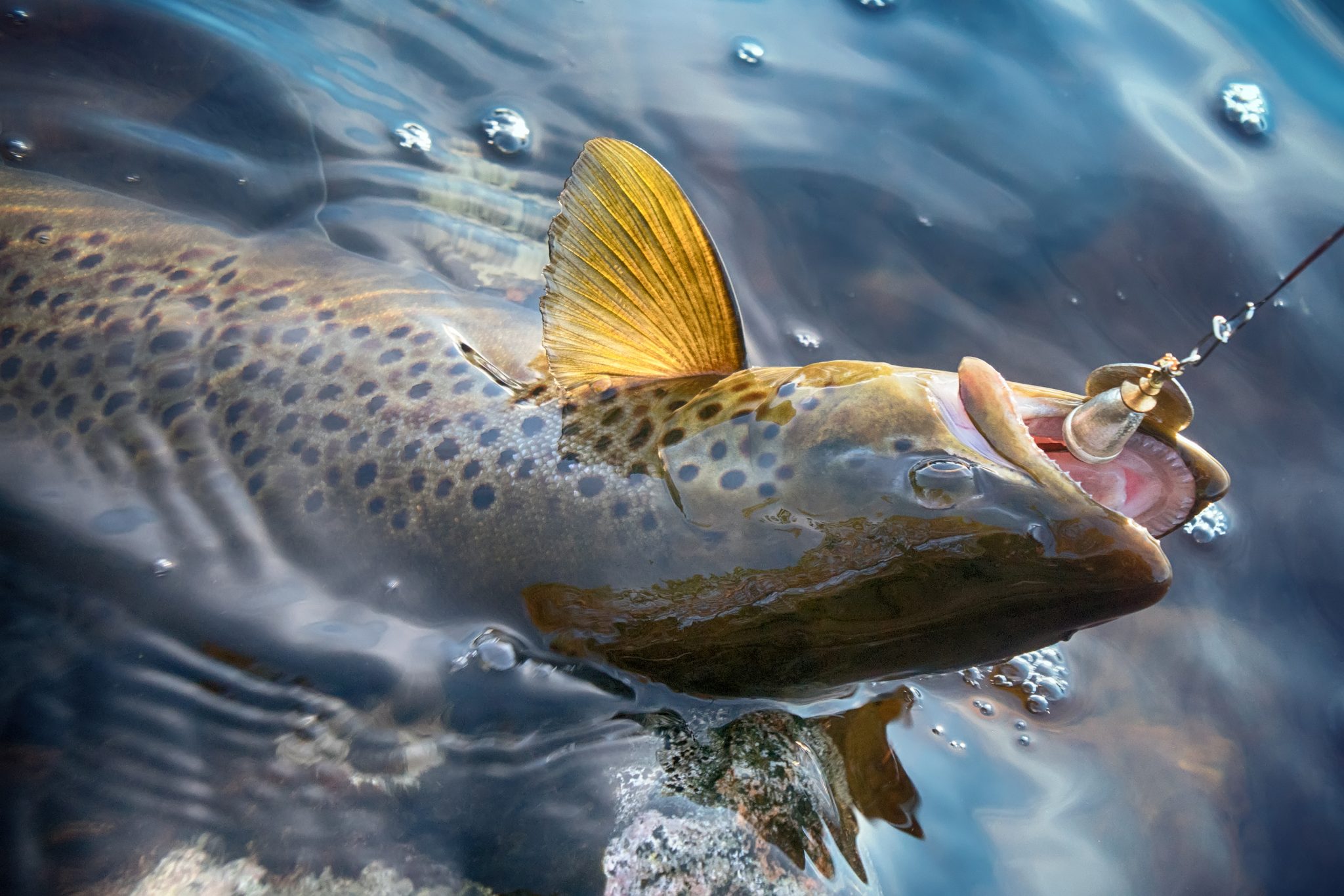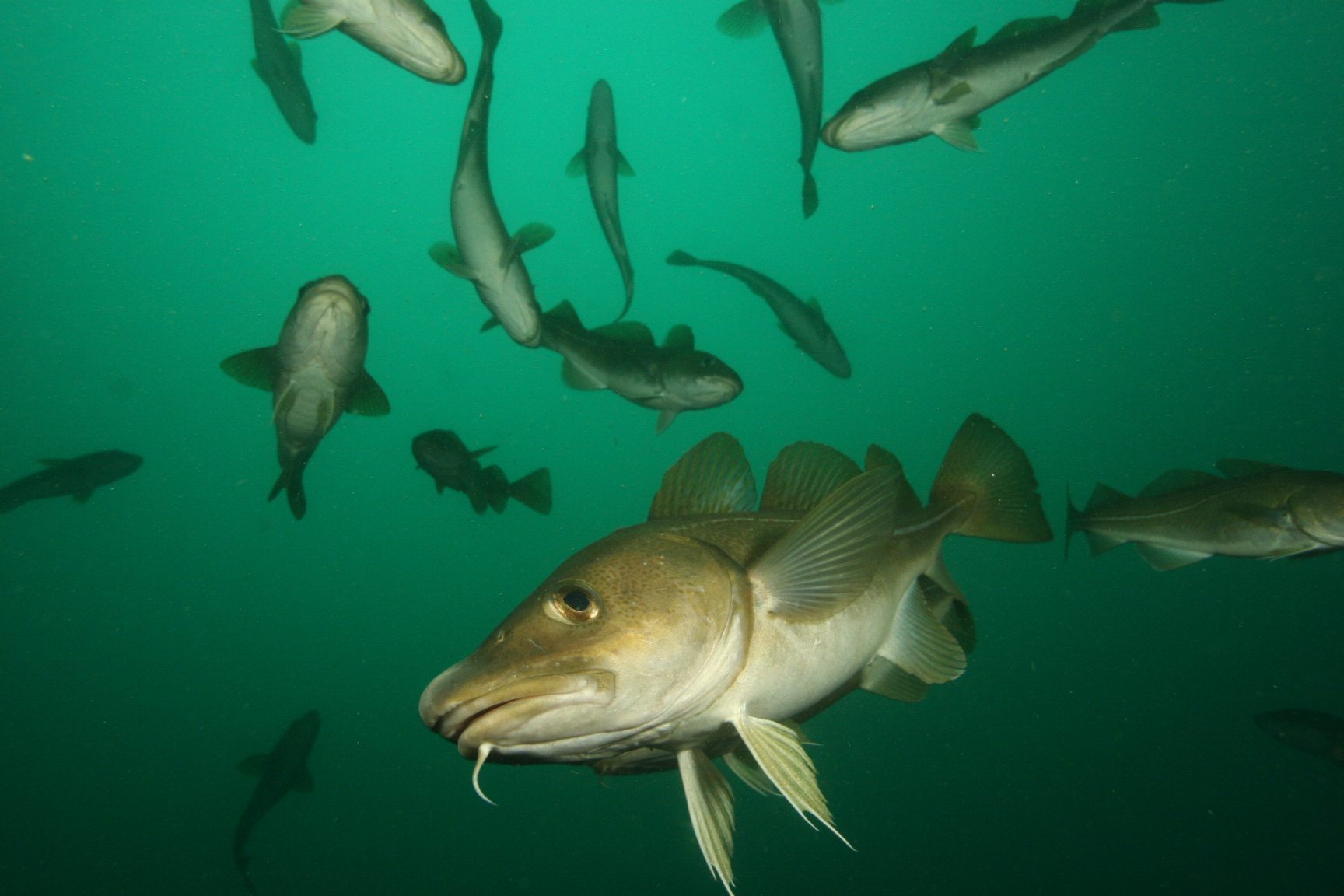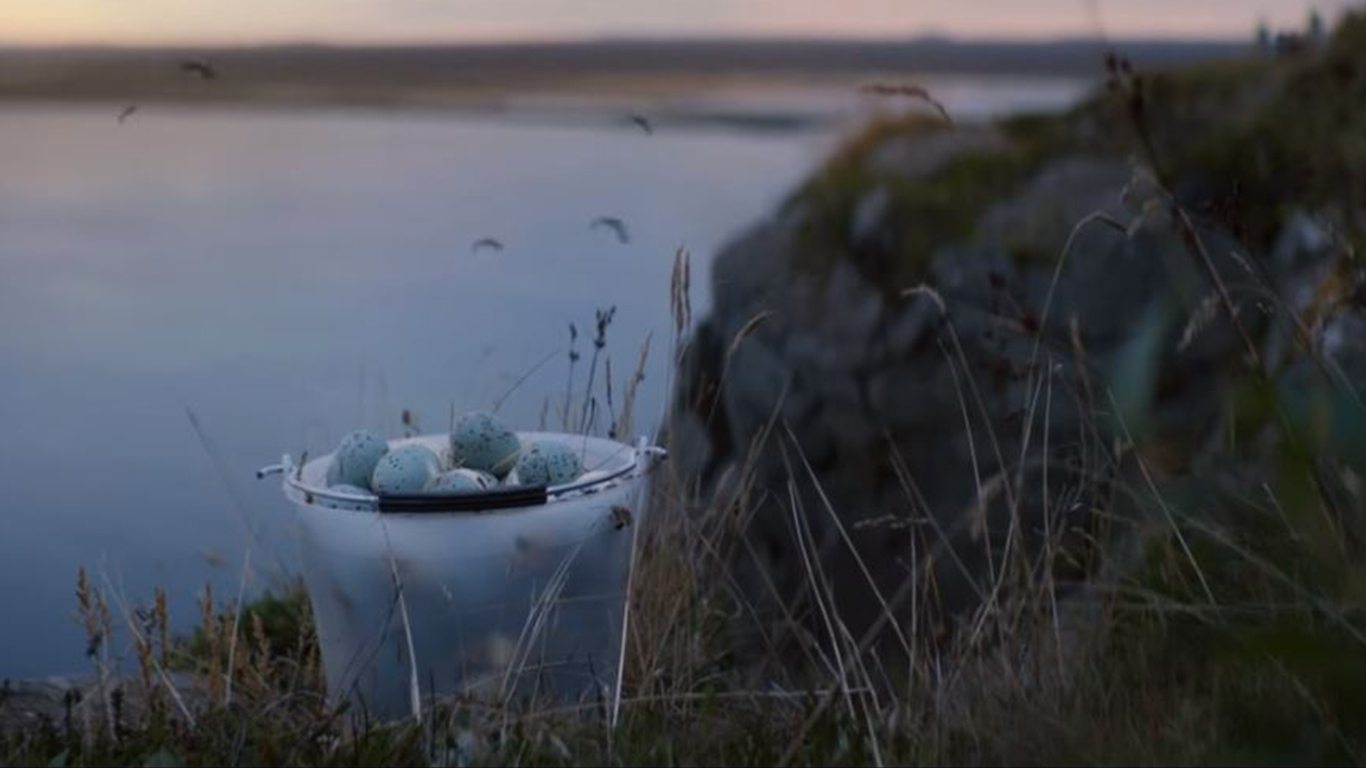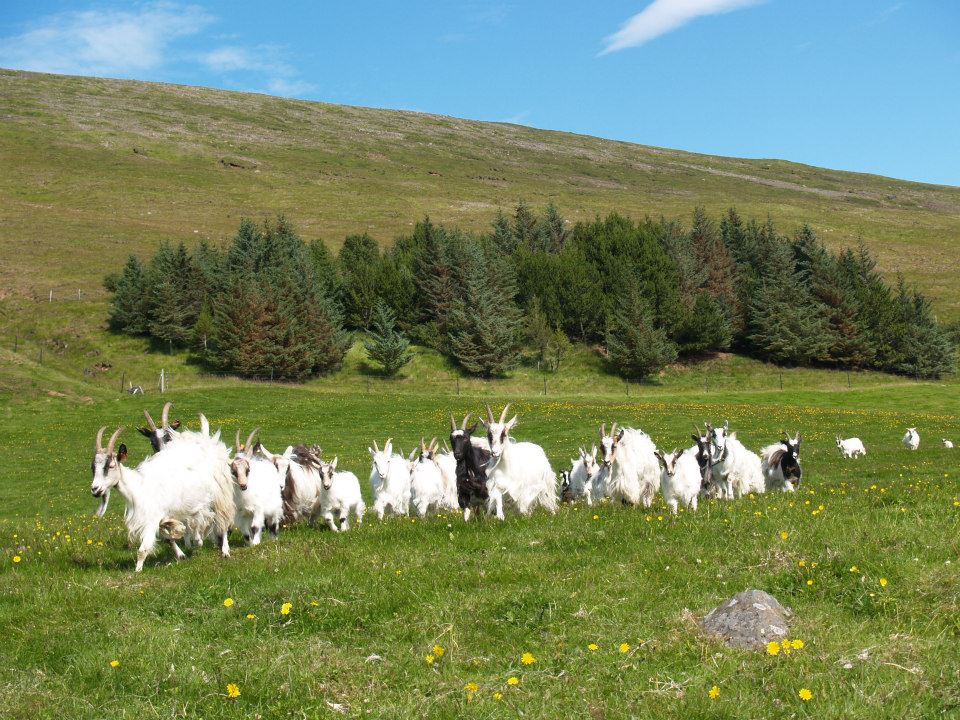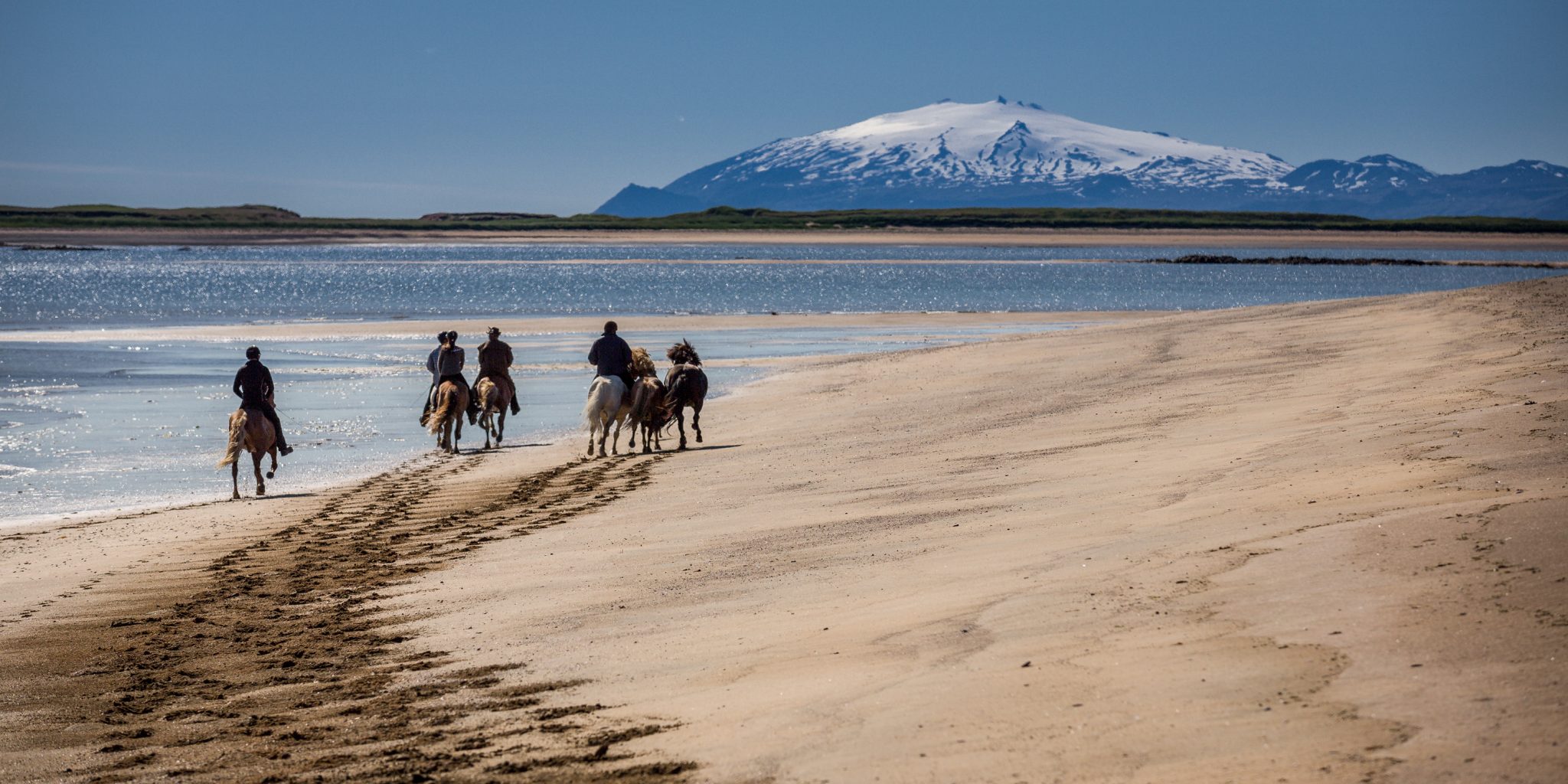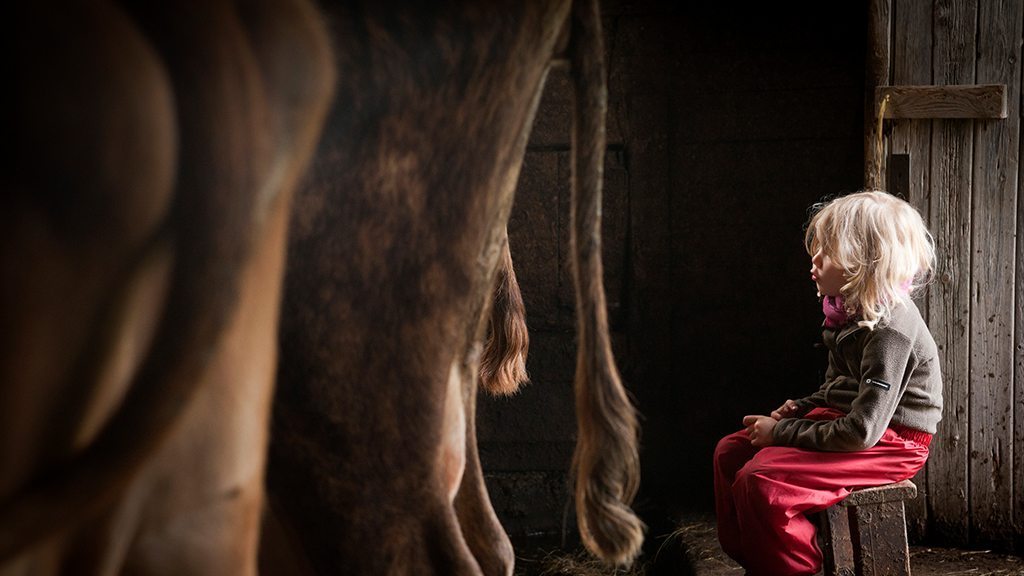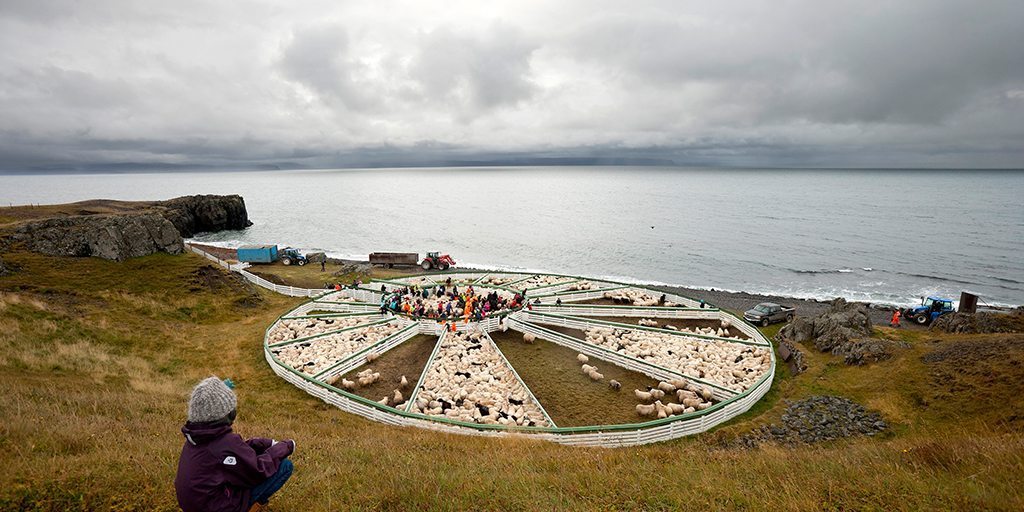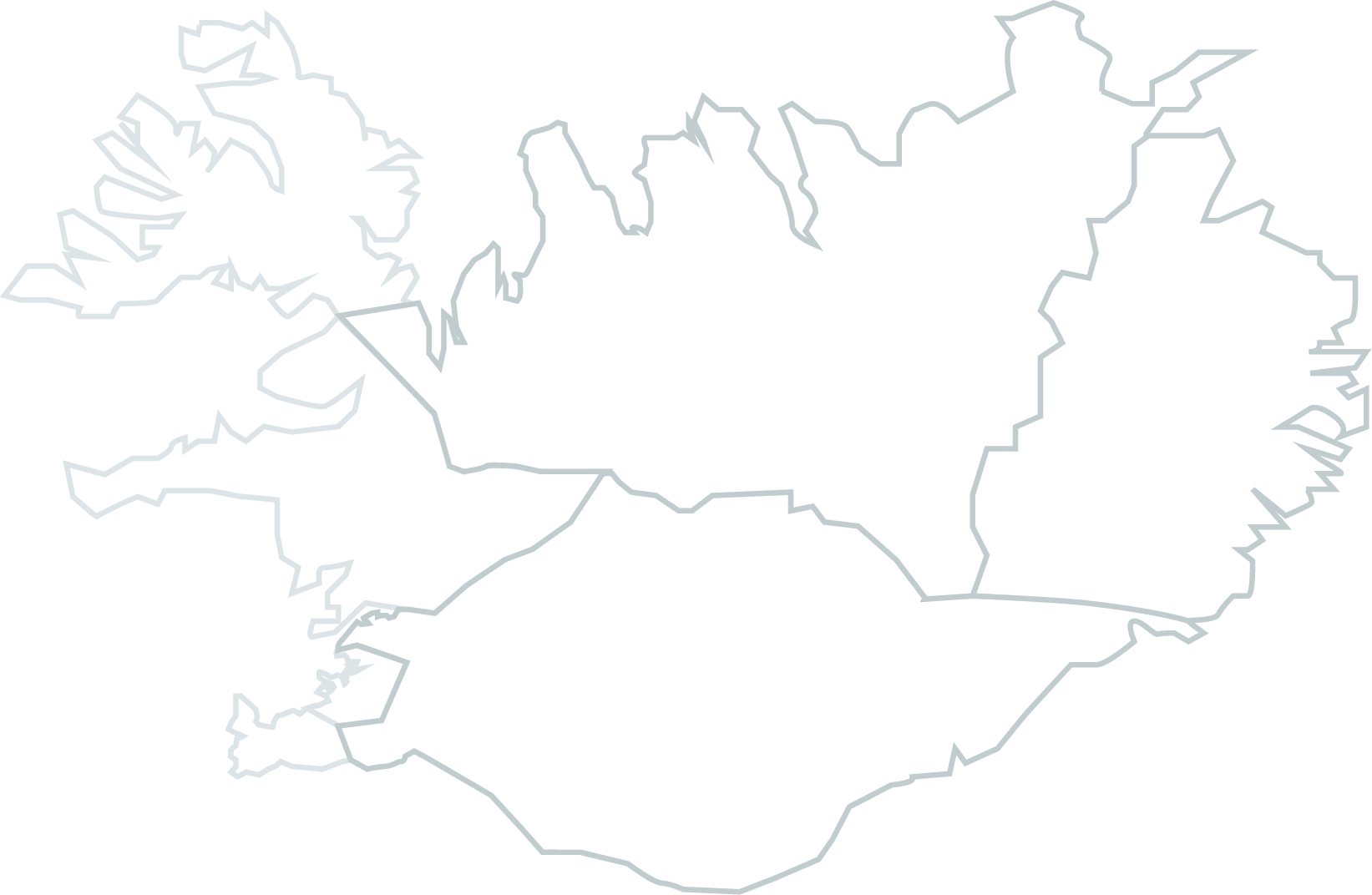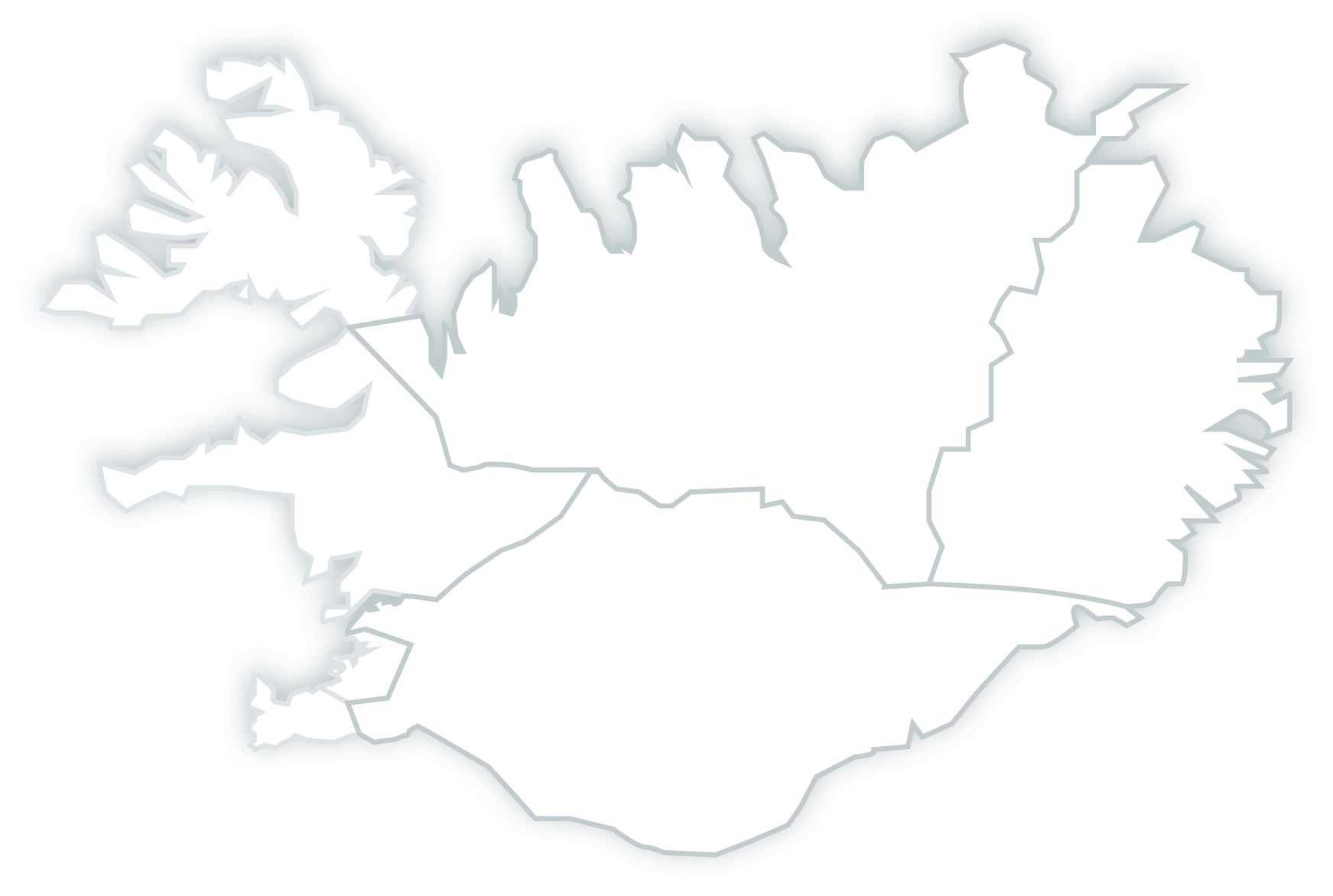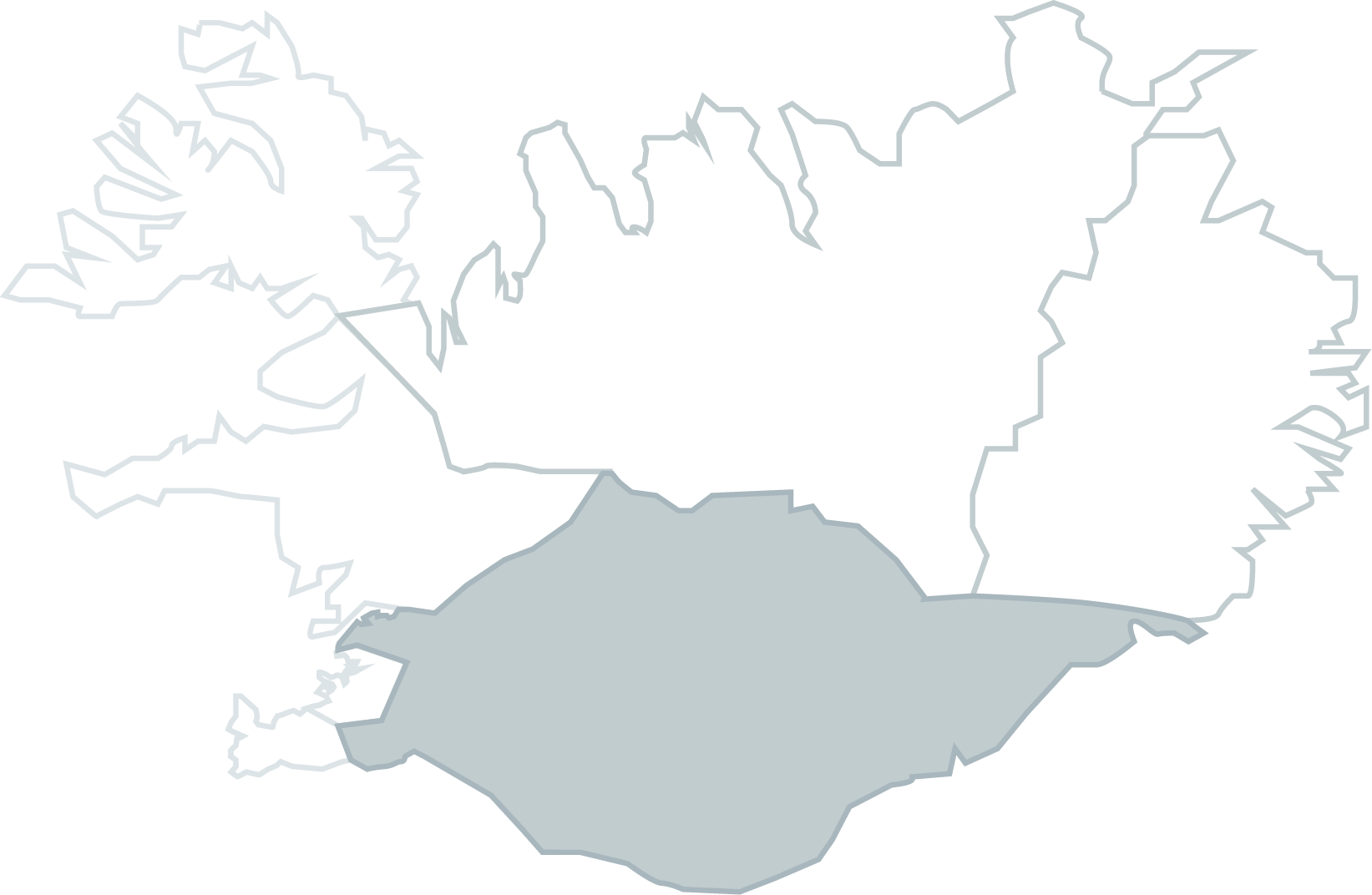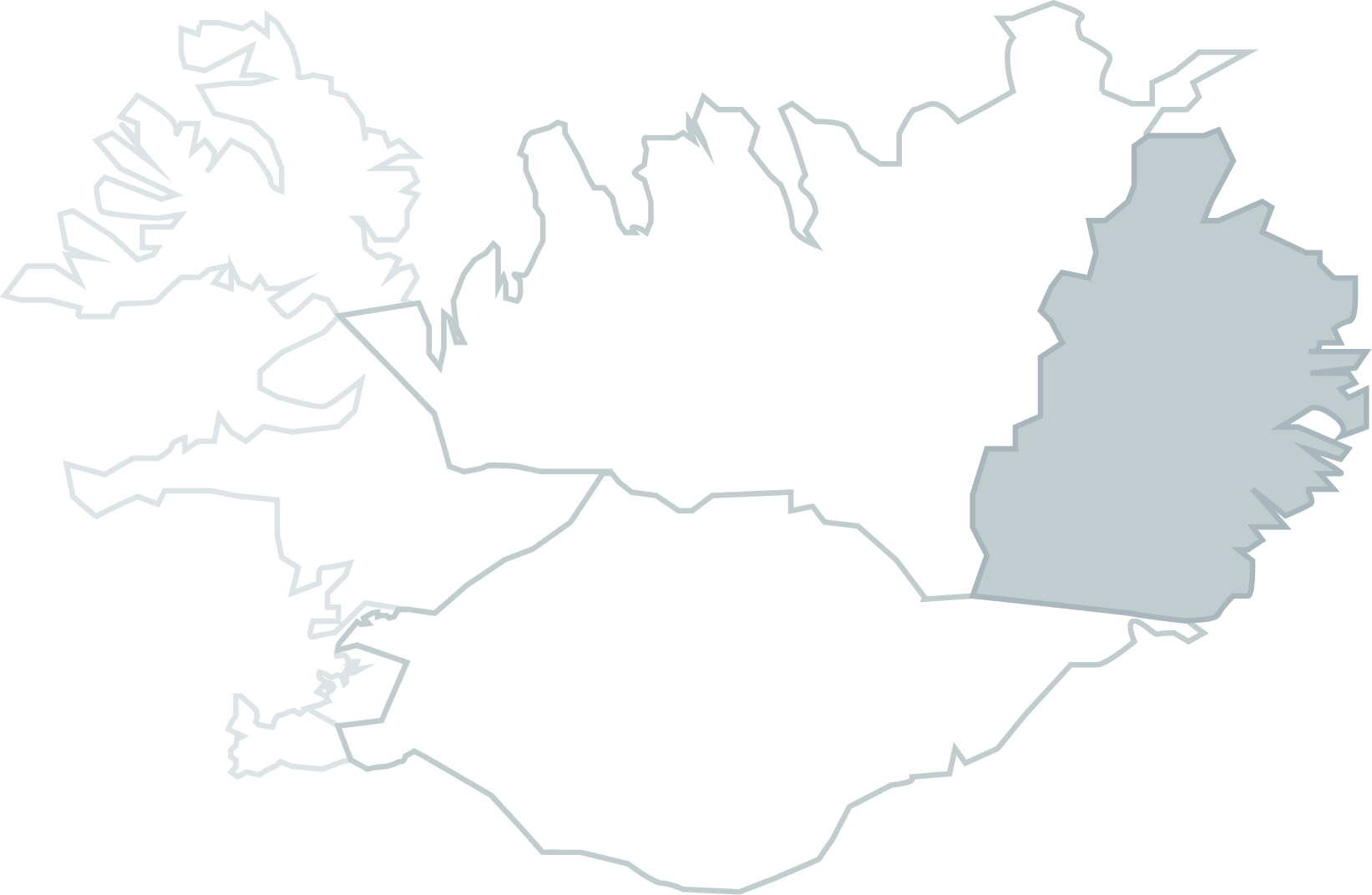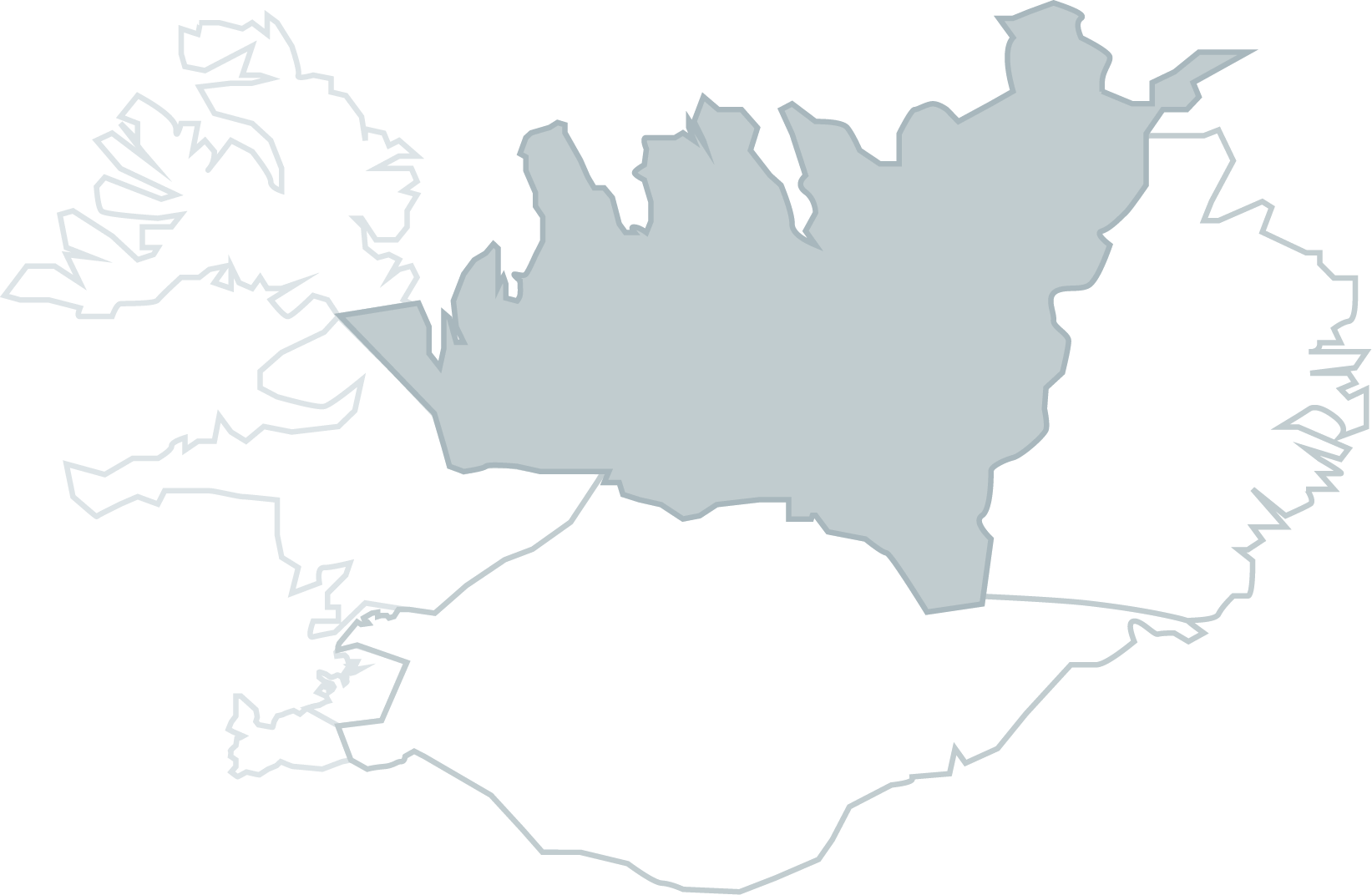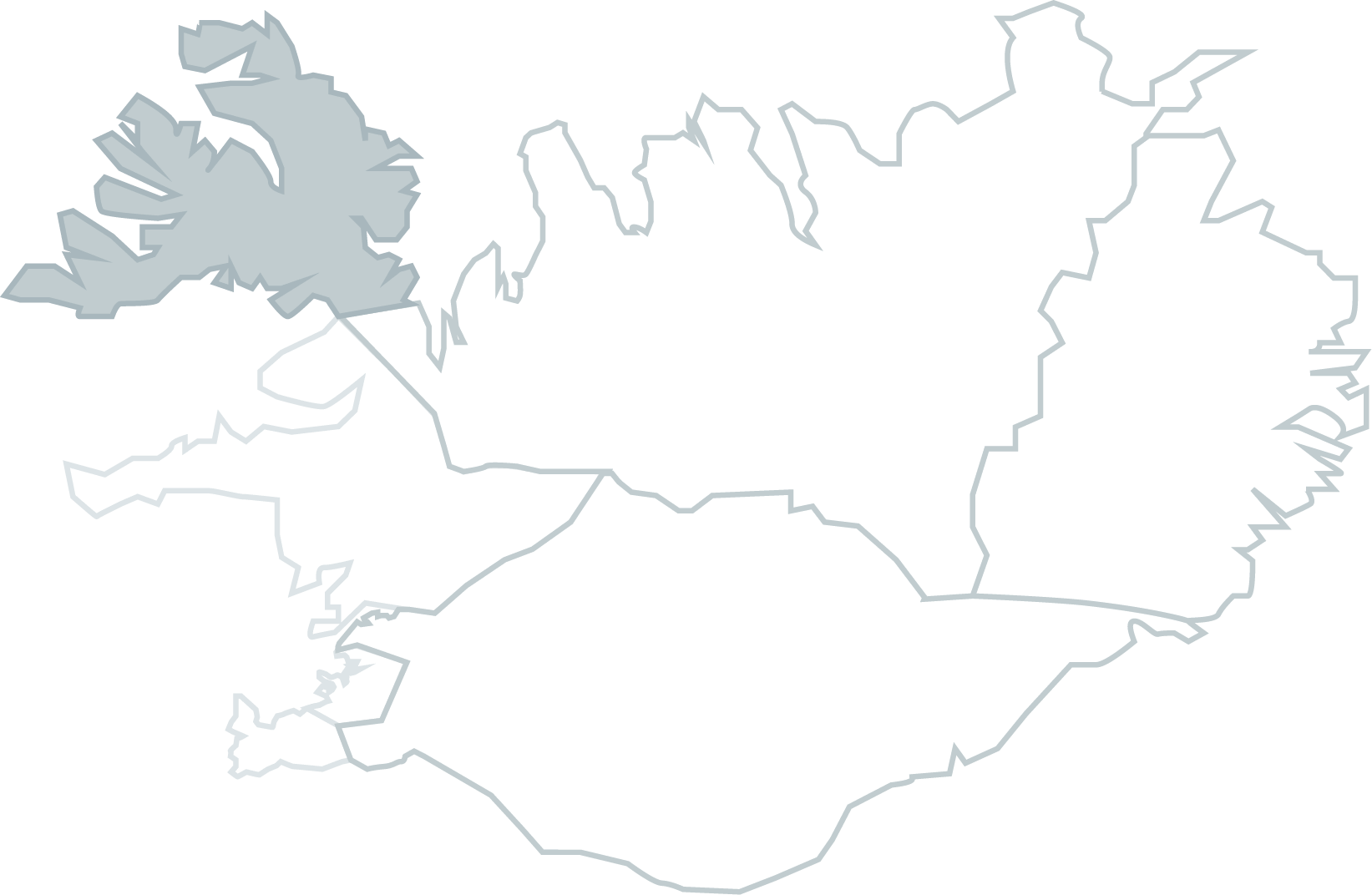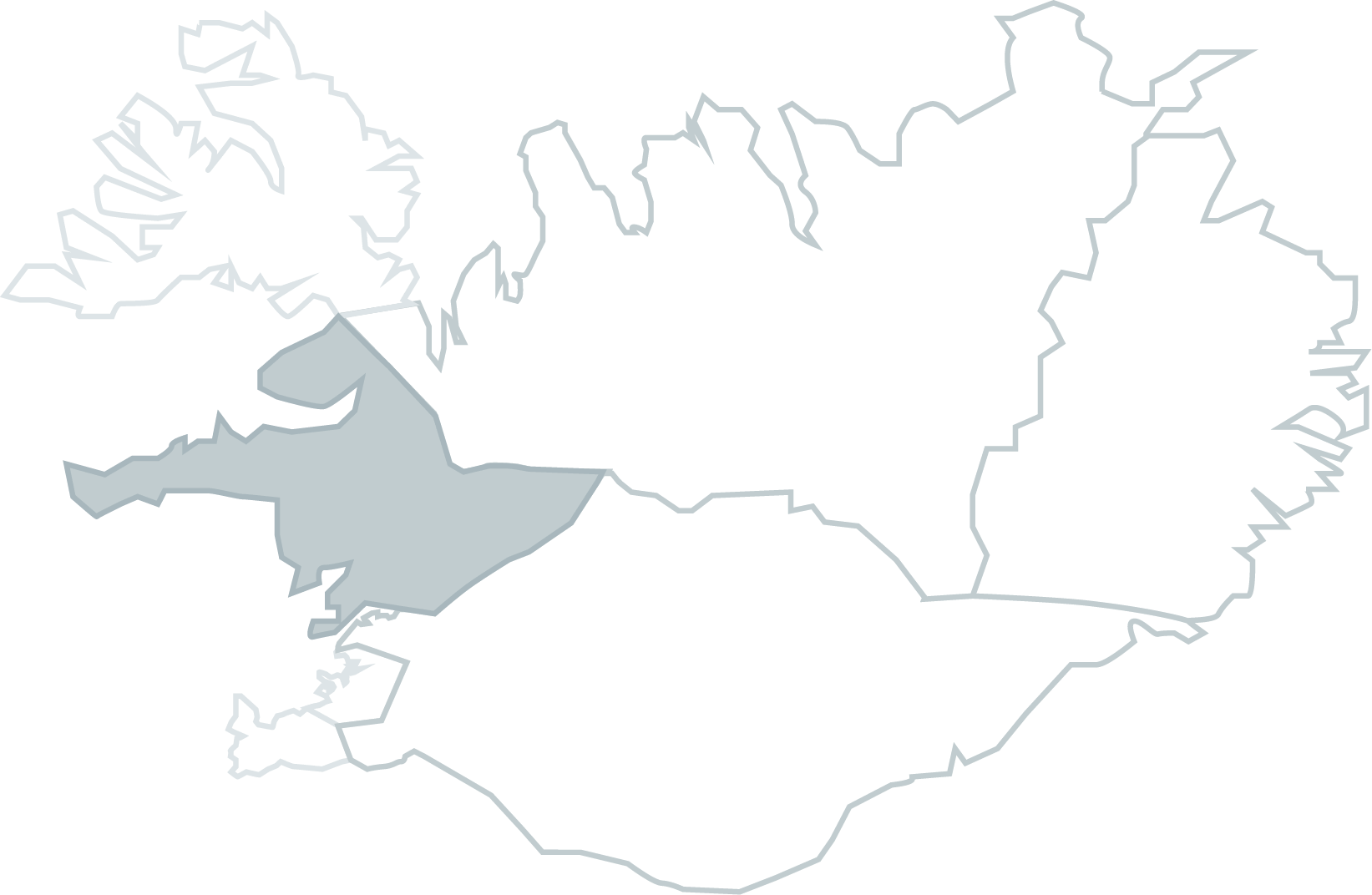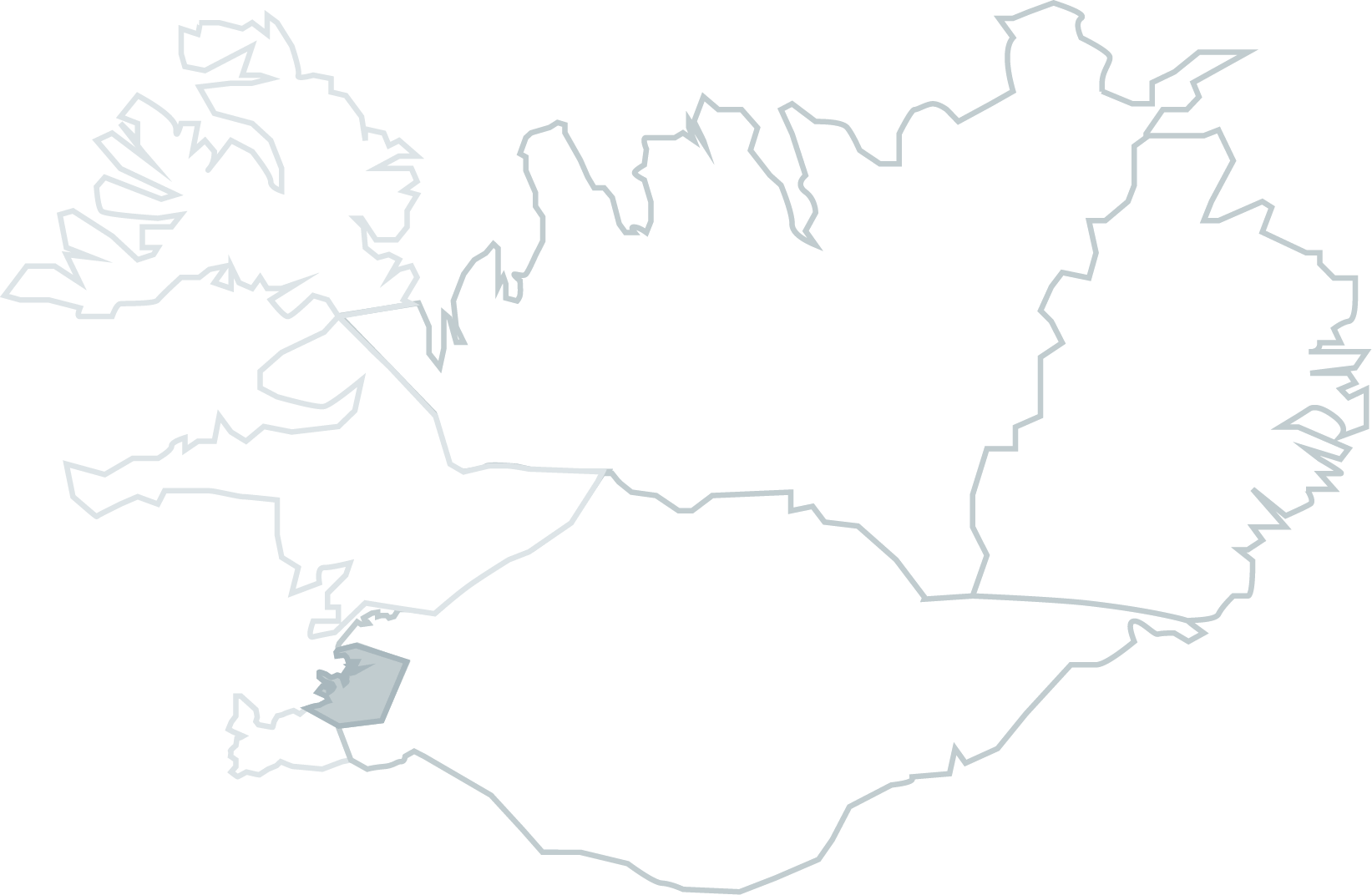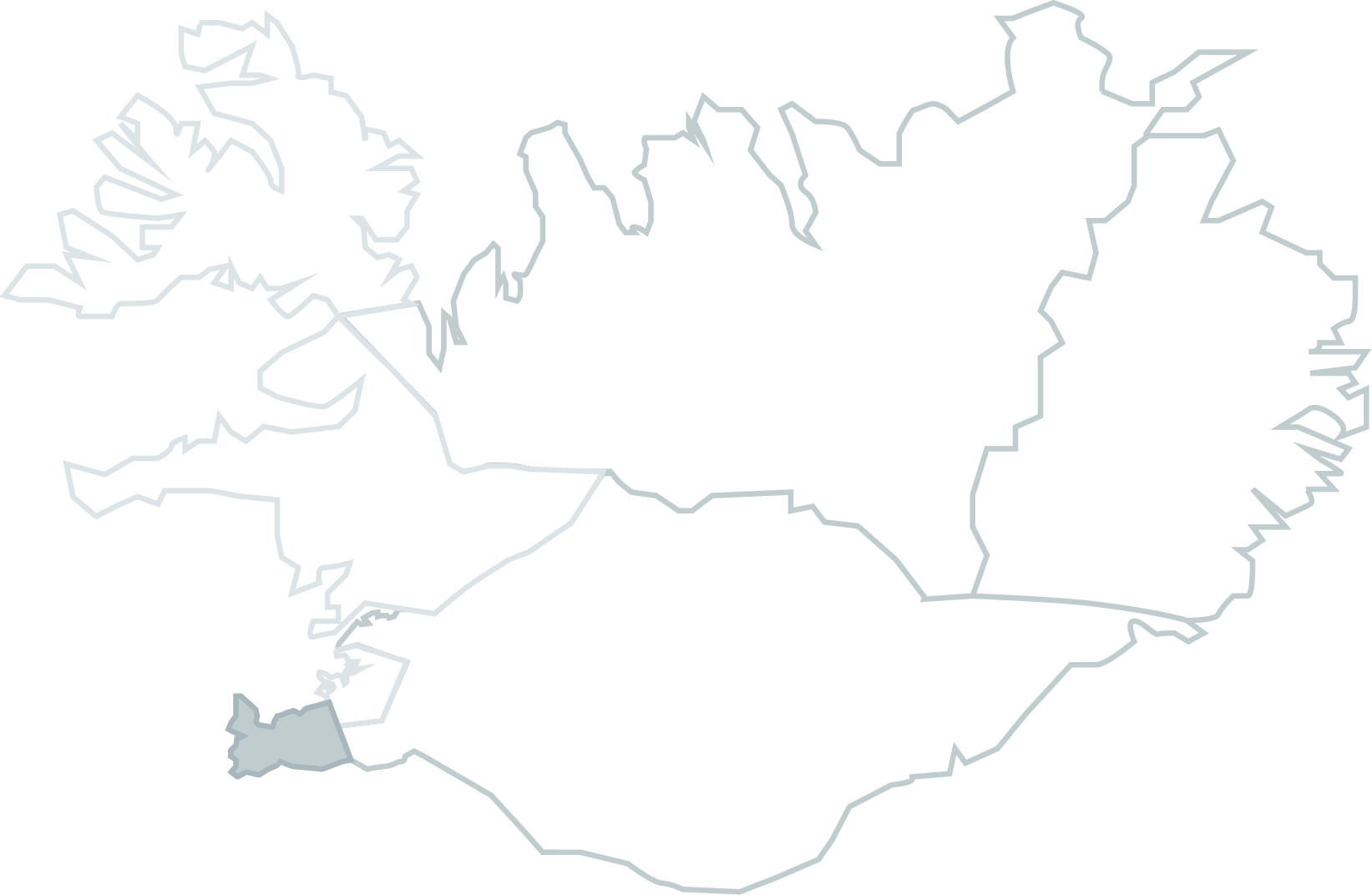The North

The landscape of northern Iceland is marked by high mountains and deep valleys, fjords and bays. Mountainous peninsulas stretch north and the Arctic Circle is only a few kilometers away from the most northern points. A volcanic belt in the region’s northeast has shaped the land. American astronauts were sent there for training before being sent on lunar missions as the landscape was thought to resemble that of the moon.
Many salmon and trout rivers meet the ocean in the North and the fish has allowed people to survive througout the ages. The teeming fishing grounds in Iceland’s North have facilitated the urbanization of the area. Agriculture is important for the region and, where geothermal heat is available, vegetables are grown in greenhouses. A multitude of companies in the food industry are in the area. Dairy and meat production is predominant. Wild mushrooms, Leccinum rotundifoliae, grow in Melrakkaslétta where they are sold locally and to restaurants in Reykjavík. There are a great many restaurants and cafés in the North, with even more opening in the wake of increased tourism. You can get local production from some farmers as well as in restaurants and in grocery stores. Just ask around!
Moss Curds & Shark Mash..in the past
A typical meal in the North was a bean mash with butter and so-called moss curds. The Icelandic moss was an everyday food, used in porridges, bread and slátur (food made from sheep’s innards). Moss curds were curdled with offal acid and eaten with milk or condensed into cheese with whey. Moss milk – milk infused with Icelandic moss – was thought to be a panacea. The Icelandic moss was combined with melted sugar, before the liquid was mixed in, to get rid of its bitter taste. Natron, or baking soda, was sometimes used to the same end.
Shark mash was common in the North and was considered a gourmet food. In Húnavatnssýsla, a dish called stropi was made from lumpfish roes. The roes were filtered, put in a churn and then brought to a slow boil. Liver was mixed in according to taste and this was a decent meal.
Smoked Food & Leafbread
The diverse nature and varied industrial activity in the region, has brought about a peculiar variety of food and culinary traditions. Old fashioned dung smoking of meats is alive and well in the area. Delicious dung smoked trout or salmon melts in your mouth, especially if served on top of freshly baked geyser bread. There is no Christmas without the dung smoked leg of a yearling on the table. Decorated leafbread is also among the strong Christmas traditions. Ripe berry picking grounds are all around the region and the fish and wild game have always been a source of sustenance for the people.
Around Lake Mývatn
If you ask grown people from Mývatn what food they ate in their youth, they will answer: “Trout and more trout.” Half-dried, salted and smoked. Smoked with dung, twigs and dwarf birch.
Gathering eggs was a common practice. The eggs were preserved in ash over winter up until the latter part of the 20th century, although some liked them better if they were fertilized. No one can forget the smell of cracked eggs as they were boiled. In Mývatnssveit and possibly other places, the singed sheep heads and the legs of adult sheep were pickled. This was a delicacy and many people have fond memories of big sausages that cannot be found anywhere today. They were made from pericardia, parts of the neck, diaphragms and other cuts of meat that are rarely used today. The meat was diced, salted and stuffed into guts, using an iron ring that every home kept for this purpose and the sausage was smoked afterward.
The people of Mývatnssveit celebrated the first weekend of lent, girls got new aprons and the boys were given new shirts. Lamb breasts, half-dried trout and other gourmet foods were served. People looked forward to this event, just like Christmas.
For more information about the culinary experiences of the north, see Visit North Iceland.
